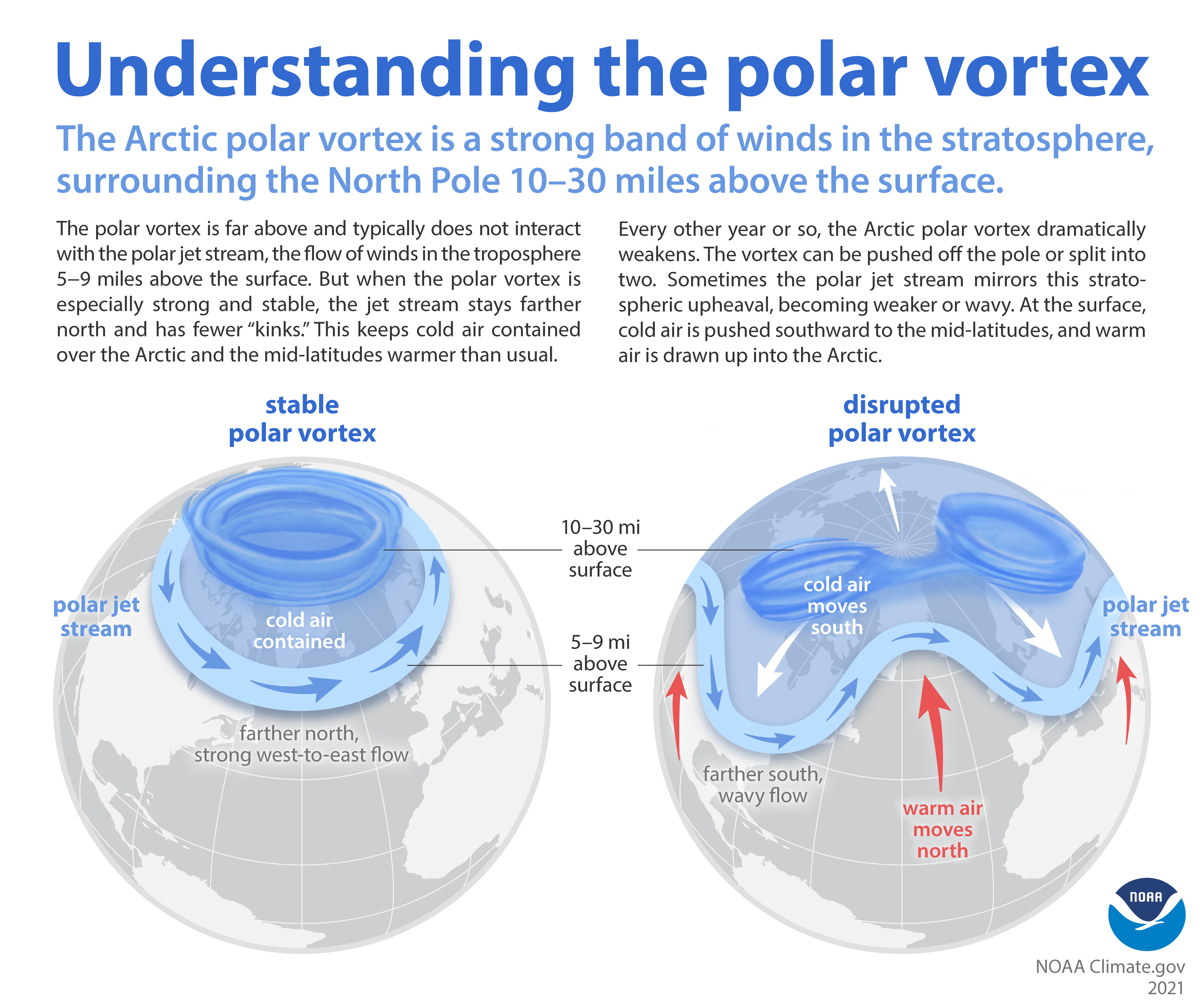Polar vortexes play a massive role in controlling our fate, at least in terms of the bitterly cold weather we face in the winter months. As global temperatures continue to creep up, we’re playing an increasingly dangerous game that could seriously upset this grand force of nature – the consequences of which are not totally known.
The Arctic polar vortex is a band of strong and cold winds constantly spinning in a counter-clockwise direction within the stratosphere between about 16 to 48 kilometers (10 to 30 miles) above the North Pole, as per The National Oceanic and Atmospheric Administration (NOAA).
There’s a very similar pattern of air on the other side of the globe above the South Pole in Antarctica.
The polar vortexes are encircled and kept in check by the polar jet streams, which are like a ribbon of wind in the troposphere at altitudes between 8 to 14 kilometers (5 to 9 miles) above the Earth’s surface. The movement of the jet stream is driven by “the convergence of cold air masses descending from the Arctic and rising warm air from the tropics,” according to NASA. They act a bit like a barrier between the warmer air in the mid-latitudes and the colder air in the polar regions.

Don’t confuse your polar vortexes with your polar jet streams.
Image credit: NOAA 2021.
When the Arctic polar vortex remains stable, the polar jet stream keeps it tightly wrapped up in a neat circle above the Arctic, maintaining all that chilly wind close to the South Pole. If the vortex becomes disrupted, however, the polar jet stream can dip towards the equator, causing the chilly winds to stray further from the poles.
This breakdown tends to happen in the North Pole, as the Antarctic polar vortex is notably more stable and robust.
If you remember the unbelievably cold weather that hit the US and Canada in January 2019, this was a clear example of the Arctic polar jet stream meandering southward, bringing in freezing cold Arctic weather. Parts of the midwest saw windchills of -45°C (-50°F), while fatalities and problems with the power grid were seen across other parts of the US.
The big concern is how climate change is going to clash with these immense planet-changing forces. The Arctic is warming at a much faster rate than any other part of the planet. It’s already causing profound changes to huge changes to the region’s biodiversity, the amount of sea ice in the region, and upsetting the existing order of things.
Currently, it’s uncertain how the climate crisis might meddle with the polar jet stream. Scientists believe the most likely outcome is that warming temperatures will initially cause the jet streams to “wave” more, causing polar air to visit the mid-latitudes more frequently, ultimately bringing more periods of colder weather.
“Disruptions of the polar vortex occur when the vortex is bumped from below by large-scale atmospheric waves flowing around the troposphere. The waves are always there, but anything that changes their strength or location—including changes in surface temperature and pressure that result from sea ice loss—can potentially influence the polar vortex. So the idea would be that even though you have an overall warming trend, you might see an increase in the severity of individual winter weather events in some locations,” Amy Butler, NOAA stratosphere expert, said in a 2021 statement.
Truth be told, however, there are many unknowns. The polar jet streams have undergone a fair amount of variation over the course of history and their complexity means they’re incredibly tricky to predict. Whatever the outcome, it’s set to bring some big changes in our world.
Source Link: Polar Vortex And Polar Jet Stream Are Facing An Earth-Changing Upset